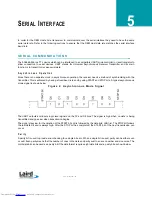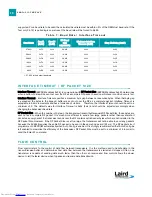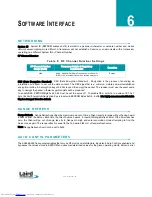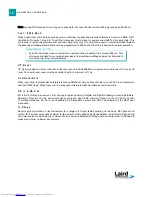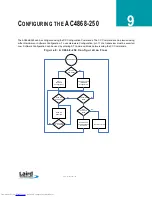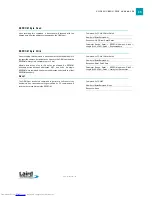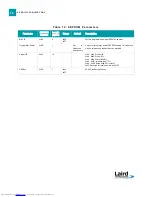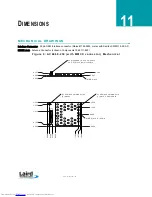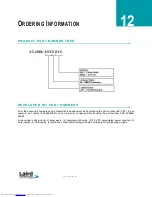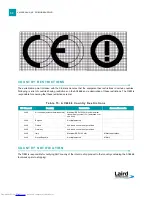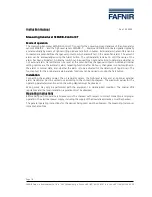
C O N F I G U R I N G T H E A C 4 8 6 8 - 2 5 0
2 0
A T C O M M A N D S
The AT Command mode implemented in the AC4868-250 creates a virtual version of the Command/Data pin. The
“Enter AT Command Mode” Command asserts this virtual pin Low (to signify Command Mode) and the “Exit AT
Command Mode” Command asserts this virtual pin High (to signify Data). Once this pin has been asserted Low, all
On-the-Fly CC Commands documented in the manual are supported.
O n - t h e - F l y C o n t r o l C o m m a n d s
The AC4868-250 transceiver contains static memory that holds many of the parameters that control the transceiver
operation. Using the “CC” command set allows many of these parameters to be changed during system operation.
Because the memory these commands affect is static, when the transceiver is reset, these parameters will revert back
to the settings stored in the EEPROM. While in CC Command mode using pin 17 (Command/Data), the RF interface of
the transceiver is still active. Therefore, it can receive packets from remote transceivers while in CC Command mode
and forward these to the OEM Host.
While in CC Command mode using AT Commands, the RF interface of the transceiver is active, but packets sent from
other transceivers will not be received. The transceiver uses Interface Timeout/RF Packet Size to determine when a
CC Command is complete. Therefore, there should be no delay between each character as it is sent from the OEM
Host to the transceiver or the transceiver will not recognize the command. If the OEM Host has sent a CC Command
to the transceiver and an RF packet is received by the transceiver, the transceiver will send the CC Command
response to the OEM Host before sending the packet. However, if an RF packet is received before the Interface
Timeout expires on a CC Command, the transceiver will send the packet to the OEM Host before sending the CC
Command response.
When an invalid command is sent, the radio scans the command to see if it has a valid command followed by bytes
not associated with the command, in which case the radio discards the invalid bytes and accepts the command. In all
other cases, the radio returns the first byte of the invalid command back to the user and discards the rest.
electronic components distributor



